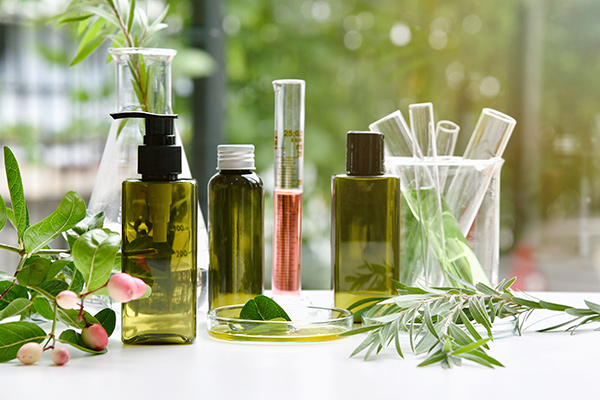 Europe and the United States are historically the two largest markets for specialty actives in the personal care ingredients market, according to the latest research by Kline & Co. but how are markets in Asia faring?
Europe and the United States are historically the two largest markets for specialty actives in the personal care ingredients market, according to the latest research by Kline & Co. but how are markets in Asia faring?
“China is driving the use of active ingredients due, in part, to consumers shifting to mid- to high-end personal care products that are, in addition, more often produced locally,” says Nikola Matic, Vice President of Kline’s Chemicals & Materials practice. Meanwhile, he notes, Japan is a mature market where actives consumption is strong but growth limited, India has high-growth potential in the mid-term, and South Korea is a trend-setting market.
The supplier landscape
Worldwide, the supplier landscape for specialty actives is fragmented, with no supplier having more than a 10% share. Global suppliers lead the market, but local suppliers are important in some markets – including China’s.
“Due to growing demand from local brands, local manufacturing of active ingredients is becoming important, and local leaders have emerged in most of the categories,” says Matic. “Chinese suppliers are gaining market share thanks to suppliers like Freda, which has been on the rise for a few years.”
In addition, global suppliers are looking at partnerships and/or local manufacturing to alleviate geopolitical uncertainty.
Find noted Specialty Active Suppliers on UL Prospector:
BASF
DSM
Croda
Givaudan
Lubrizol
Freda
Ashland
Characteristics of the key Asian markets
Botanicals and biotechnology actives currently lead the market for specialty actives in Asian markets.
“The biotechnology category is even stronger in China than in the rest of the world,” says Matic. Synthetic peptides are also growing quickly in the country due to the local manufacturing of molecules that went off-patent.
According to Kline, some of the most prominent market drivers Kline is observing in China include technology skin care, a growing concept that involves developing new active ingredients based on new technologies for skin care products. Typical actives that are considered technology skin care belong to biotechnology actives and peptides.
The “skinification” of hair care is also becoming popular. “Consumers have begun to understand that healthy hair is the result of a healthy scalp, and they now perceive scalp care as an extension of their skin care routine,” says Matic. The result: an increasing number of hair care products containing popular skin care ingredients such as hyaluronic acid and glycolic acid. Olaplex, for example, has already brought the skinification of hair to its products via its No.5 Bond Maintenance Conditioner, which contains hydrolyzed hyaluronic acid.
In addition, unhealthy lifestyles/stress/pollution is driving demand for products to prevent hair loss or soothe sensitive skin via anti-inflammatory properties. Also on the rise: Clean beauty, as consumers seek more natural and sustainable products, and skin microbiome balance, with celebrities actively promoting the concept and its relevant actives.
Finally, Matic says, regulatory challenges are affecting the market. They include the National Medical Products Administration restricting live cell usage in skin care products; this restricts further development of the market for probiotics, stem cell extracts, and more.
In India, the market remains pseudo-commodity-driven, with vitamin derivatives and high-volume biotech taking center stage.
“India is still commodity-driven, with larger-volume products in the most demand,” says Matic, noting that the region represents a small market, with just 1% of global demand. “There’s an extremely fragmented supplier base, notably in botanicals. Consumer awareness and understanding of ingredients in personal care formulation is growing which in turn makes the presence of active ingredients increasingly desirable for educated consumers.”
For its part, Japan also represents a minor market at 1% of global demand, with a share of biotech that’s smaller than elsewhere.
“There’s a strong share of botanicals, and marine ingredients double the share of the global average due to their role in Japanese traditions,” Matic says. Market drivers include Japan’s aging population and young consumers leaning toward natural products and botanicals.
What’s expected in the future?
India and China are expected to be the fastest-growing market for the specialty actives industry by a
large margin, with South Korea and Japan lagging behind. When it comes to growth in consumption of specialty actives, peptides and biotechnology are expected to increase faster than the average market growth for specialty actives. They’ll be followed by botanicals, marine ingredients, and synthetic actives.
Kline is a leading global management consulting and market research firm offering a complete spectrum of services. The firm has served the management consulting and market research needs of organizations in the chemicals, materials, energy, life sciences, and consumer product industries for more than 60 years. Currently, Kline offers three analyses covering the personal care ingredients market: Delivery Systems in Personal Care: Market Analysis and Opportunities, Personal Care Ingredients: Global Market Analysis, and Specialty Actives in Personal Care: Global Market Analysis and Opportunities.
The views, opinions and technical analyses presented here are those of the author or advertiser, and are not necessarily those of ULProspector.com or UL Solutions. The appearance of this content in the UL Prospector Knowledge Center does not constitute an endorsement by UL Solutions or its affiliates.
All content is subject to copyright and may not be reproduced without prior authorization from UL Solutions or the content author.
The content has been made available for informational and educational purposes only. While the editors of this site may verify the accuracy of its content from time to time, we assume no responsibility for errors made by the author, editorial staff or any other contributor.
UL Solutions does not make any representations or warranties with respect to the accuracy, applicability, fitness or completeness of the content. UL Solutions does not warrant the performance, effectiveness or applicability of sites listed or linked to in any content.
